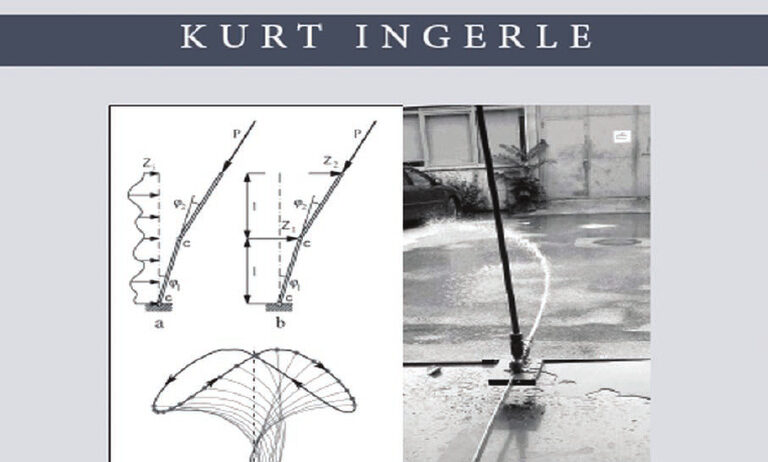Energy is a cornerstone concept in physics, and its understanding is foundational for various scientific disciplines. Within the realm of mechanics, two principal categories of energy systems exist: conservative and non-conservative systems. Conservative systems are intriguing, as they exemplify a unique characteristic: the total mechanical energy within such systems remains constant. This stability raises pertinent questions about the nature of energy within these frameworks—specifically, whether kinetic energy is the only form present. This discussion delves into the nuances of energy in conservative systems, elucidating various forms, interrelationships, and implications.
At the outset, it is crucial to define what constitutes a conservative system. A system is termed ‘conservative’ when the work done by forces acting within the system is path-independent. This condition allows for the establishment of a potential energy function associated with the forces at play. Gravitational force and spring force are prime examples of conservative forces; thus, the energy within such systems can be distilled into two primary forms: kinetic energy and potential energy.
Kinetic energy is the energy of motion. The classical formula for kinetic energy is expressed as K = ½ mv², where m represents mass and v denotes velocity. This equation highlights that kinetic energy increases with the square of the velocity, rendering it particularly significant when analyzing high-speed systems.
Potential energy, on the other hand, represents stored energy which has the potential to do work when released. Its form comes in various manifestations; gravitational potential energy (U = mgh), for example, is dictated by an object’s height (h) within a gravitational field. Similarly, elastic potential energy arises in objects like springs, expressed as U = ½ kx², where k is the spring constant and x is the displacement from the equilibrium position. The interplay between kinetic and potential energy is foundational to our understanding of energy conservation, encapsulated in the principle of conservation of mechanical energy.
In a closed system devoid of dissipative forces, the conservation of mechanical energy posits that the sum of kinetic and potential energy remains constant over time. When an object is lifted in a gravitational field, potential energy increases at the expense of kinetic energy, and conversely, as it falls, its kinetic energy increases while potential energy decreases. This interconversion exemplifies the dynamic nature of energy within conservative systems; however, it does not negate the presence or significance of potential energy.
The discourse must also extend beyond mere kinetic and potential forms. A deeper inquiry into conservative systems invites us to consider other forms of energy that, while perhaps not immediately evident, play integral roles in many physical phenomena. For instance, rotational energy, the energy associated with objects in rotational motion, is a pertinent form that also exists in conservative systems. The rotational kinetic energy can be expressed as K_rot = ½ Iω², where I is the moment of inertia and ω is the angular velocity. This recognition underlines the multifaceted nature of energy in conservative systems, indicating that kinetic energy alone is insufficient to encapsulate the total energy framework.
Moreover, electromagnetic potential energy deserves particular attention, especially in the context of charged bodies and magnetic fields. Electrostatic forces, which can be deemed conservative, possess associated potential energy dictated by the configuration of the charged bodies involved. Thus, the landscape of energy in conservative systems is often markedly broader than a simplistic view focused exclusively on kinetic energy.
Understanding the roles of both kinetic and potential energy is vital when evaluating dynamics and stability within these systems. For instance, when analyzing orbital mechanics, celestial bodies exhibit both kinetic and gravitational potential energy that govern their motions. The orbits of planets, comets, and satellites provide a vivid illustration of energy transformations, wherein an object trades kinetic energy for gravitational potential energy as it ascends and descends through its orbit, illustrating the elegance of energy conservation in action.
It is essential to highlight that the absence of non-conservative forces, such as friction and air resistance, enhances the clarity of discussions regarding conservative systems. These non-conservative forces, which do work that is path-dependent, lead to energy dissipation, often as heat, and complicate mechanical energy conservation principles. The distinction becomes critical when framing practical applications and problem-solving scenarios in real-world systems.
Awareness of the principles governing conservative systems provides substantial advantages in various fields, including engineering, astrophysics, and environmental sciences. Optimizing mechanical systems often requires a thorough comprehension of energy transfer processes. In environmentally-conscious discussions, energy conservation strategies can be derived from these principles, promoting sustainable practices and reducing waste in energy systems.
In conclusion, while kinetic energy is a prominent component of conservative systems, it is far from the only form of energy present. The interplay between kinetic and potential energies, along with other forms such as rotational and electromagnetic potential energies, illustrates an intricate tapestry of energy dynamics. The principles of energy conservation play a crucial role in understanding and predicting behaviors in conservative systems, highlighting the multi-dimensional aspects of energy beyond a singular focus. This comprehensive understanding not only furthers scientific inquiry but also informs practical applications in technology and conservation.








